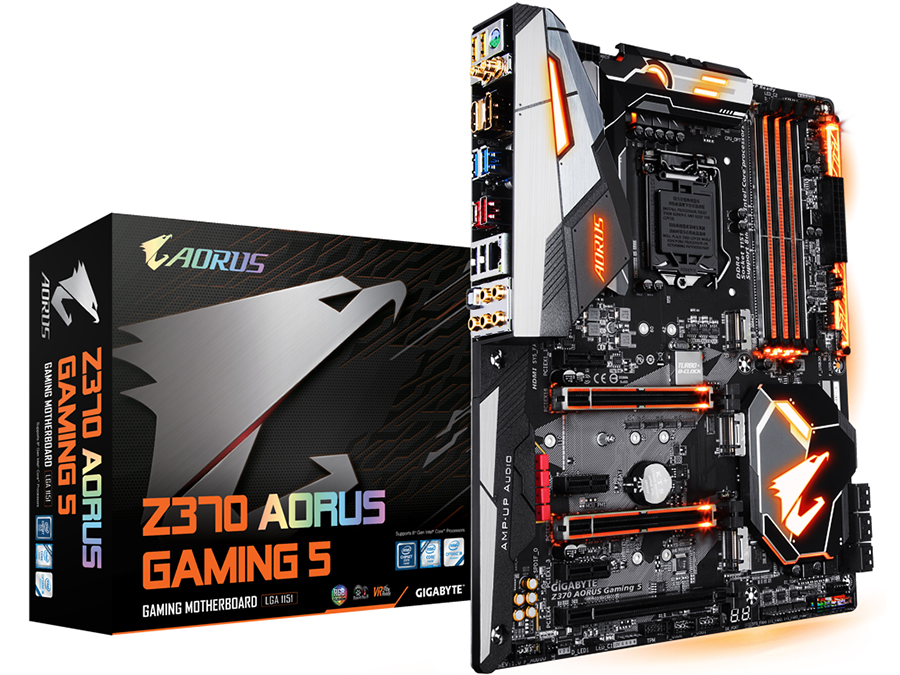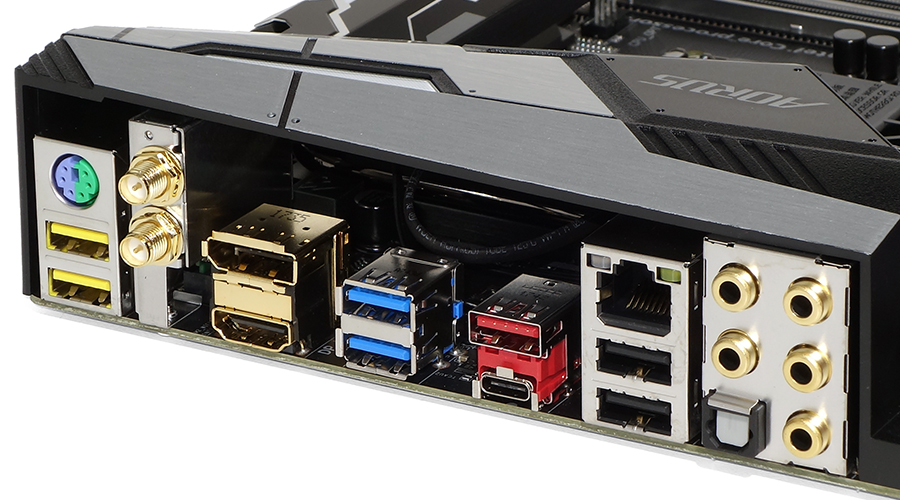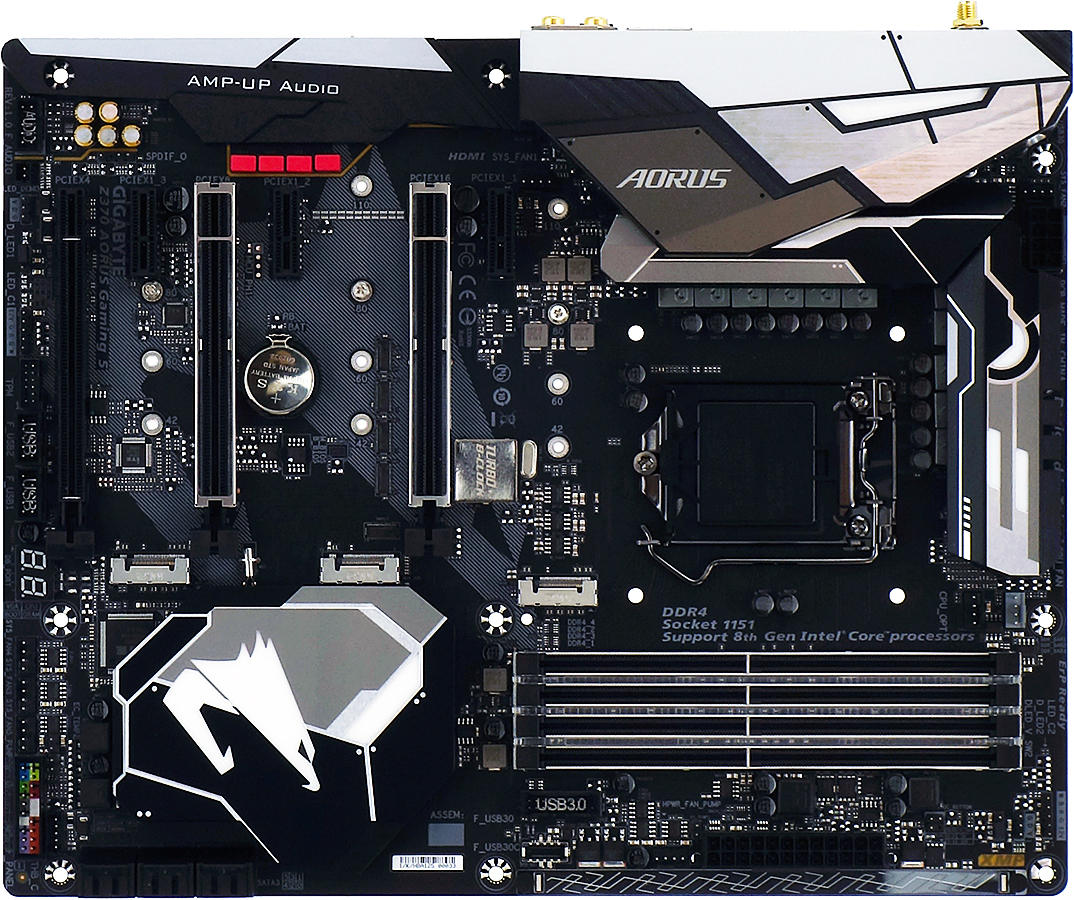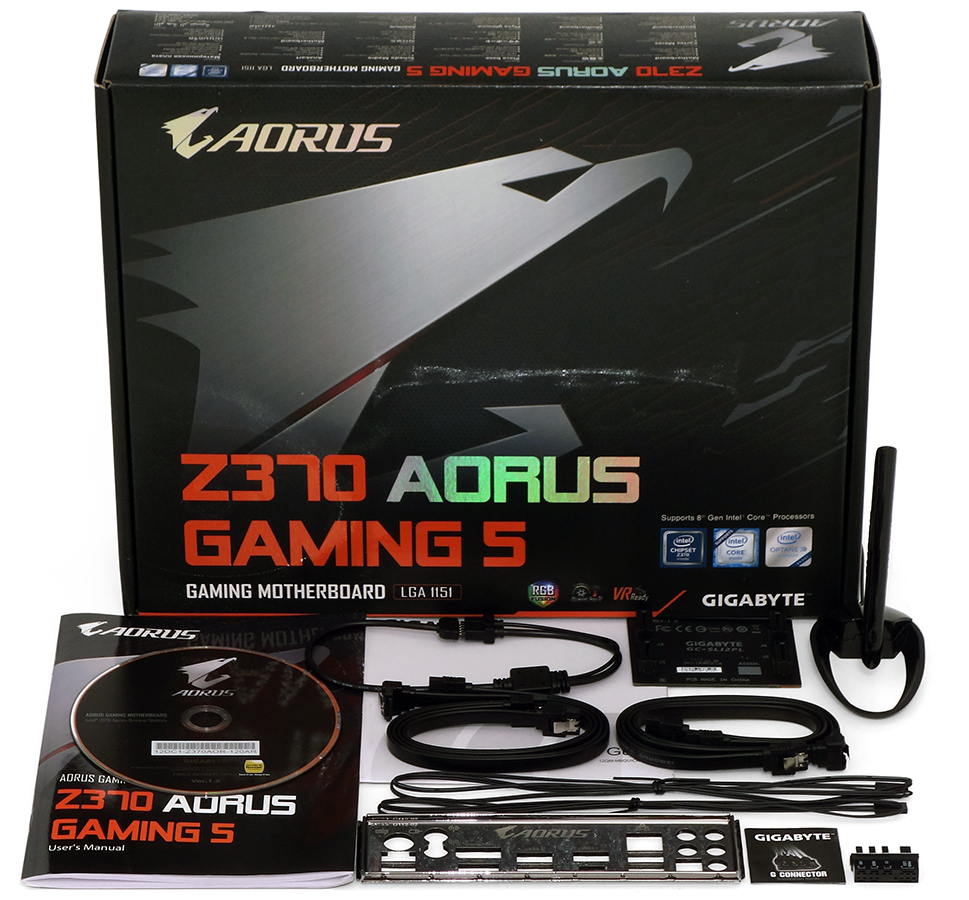Gigabyte Z370 Aorus Gaming 5 With Wifi Review
Our Verdict
Gigabyte's Z370 Aorus Gaming five solves the value concerns of its Gaming 7 sibling through its significantly lower toll. Strong overall value becomes a killer buy for customers who honey RGB lighting excess.
For
- Great overclocking
- Triple M.ii slots
- Fantabulous fan header configuration
- Enhanced on-lath lighting plus ii D-LED and two RGBW headers
- Better-value pricing
Against
- Multiple resources shares reduced SATA availability by up to four ports
- Using the third M.2 slot drops the lesser PCIe slot to 2 lanes
Tom's Hardware Verdict
Gigabyte'south Z370 Aorus Gaming v solves the value concerns of its Gaming 7 sibling through its significantly lower price. Strong overall value becomes a killer buy for customers who love RGB lighting excess.
Pros
- +
Great overclocking
- +
Triple G.2 slots
- +
Excellent fan header configuration
- +
Enhanced on-board lighting plus two D-LED and two RGBW headers
- +
Improve-value pricing
Cons
- -
Multiple resource shares reduced SATA availability by upwards to iv ports
- -
Using the third One thousand.ii slot drops the bottom PCIe slot to 2 lanes
Features & Layout
Gigabyte's Z370 Aorus Gaming 5 offers a more than cost-conscious alternative to its big brother, the Z370 Aorus Gaming 7: Shaving the 2nd Gigabit Ethernet port off the I/O panel, the firm also shaved $l off the toll tag while calculation a low-cost Wi-Fi adapter. A few onboard buttons are besides gone, along with the Gaming 7's single Yard.2 heat spreader, just Gaming 5 buyers even so get the three M.2 storage slots of its higher-priced sibling.
The company as well kept the total onboard RGB packet and associated low-cal strip headers, simply the value of those additions typically depends on the builder'south choice of case aesthetic. Nosotros'll treat this equally a potential value bonus for RGB fanatics equally we delve deeper into the Z370 Aorus Gaming 5'southward value credentials.

The Z370 Aorus Gaming 5's layout looks strikingly familiar, from its triple M.2 storage and triple x16-length PCIe slots to its single Type-C USB forepart-panel header, withal a closer wait at the specs reveals that the Blazon-C output is merely of the Gen 1 multifariousness (aka USB 3.0), while a closer look at the long PCIe slots reveals that only two of these are lighted and surrounded by metal reinforcement. That last change should be considered purely aesthetic past most users, since both motherboard models limit the bottom slot to four lanes from the PCH, and it drops all the manner down to two lanes when the bottom Grand.2 slot is occupied.

Changes to the I/O console are a little more obvious, showtime with the absence of a 2d RJ-45 connector and the presence of two Wi-Fi antenna connectors. The USB ports have been rearranged to offering one additional Blazon A port, along 2 yellow "DAC-Up 2" USB iii.0 ports with adjustable voltage, two regular USB iii.0 ports and a USB 3.1 Gen2 Type A port that sits on the aforementioned 2-lane PCIe 3.0 controllers every bit the Type-C port. The final 2 ports are USB ii.0 and suitable for depression-speed peripherals such equally keyboards and mice.

As with the Gaming seven, the height Chiliad.2 ports of the Z370 Aorus Gaming 5 steal two HSIO resources from two SATA ports, regardless of whether they are loaded with SATA or PCIe based Thousand.ii modules. The center K.2 slot has a full set of PCIe lanes, and steals a SATA port only if an SATA module is installed.
The lower slot has no SATA connectivity, merely does steal two lanes from the four-lane lower PCIe slot when filled. The top PCIe x1 slot steals an HSIO resource from an SATA port, then the worst-case scenario of having any 1000.2 bulldoze in the first slot, an SATA 1000.two in the second slot, and an x1 carte du jour in the top PCIe slot would leave builders with only 2 active SATA cable ports.

The ii metal-reinforced LED-lighted PCIe slots switch from x16/x0 to x8/x8 manner whenever a carte is installed in the lower of these two slots. That's par for the course with Z370 motherboards, given the CPU interface's ability to support 16 lanes directly, and the ability of the CPU's onboard PCIe controller to split those across up to three cards. Hardly any gaming motherboard has more than two CPU-fed slots because hardly whatever gamer wants to put a card on an x4 slot, though a few storage geeks were probably hoping for CPU-based NVMe via 1000.2.

The Z370 Aorus Gaming 5'southward lesser edge features an HD-Audio forepart-panel header, a power header for demonstrating LED lighting using a bare board, 1 (of ii) addressable LED headers with voltage selector jumper, one (of two) RGBW LED strip header, a TPM module port, two USB 2.0 two-port headers, a two-digit diagnostics code brandish, three (of viii) iv-pivot fan headers, 1 (of ii) thermistor lead headers, a CLR_BIOS jumper, a Thunderbolt add together-in card header, and an extended forepart-panel switch/activity light header with the standard Ac-97 pivot organization on the left, a beep-code speaker and 3-pivot power LED header on the right, and a chassis intrusion header in the heart. The chassis intrusion header uses the "North/C" (not connected) pin typically found on Intel style power/LED headers as a footing.

The installation kit includes the driver disc and documentation, an RGBW extension cable with detachable white lead, a high-bandwidth SLI span, a magnetic-base Wi-Fi antenna, four STA cables, ii Thermistor cables, an I/O shield, and Gigabyte's connector coupling for front panel activity LED/push leads.
Specifications
| Socket | LGA 1151 |
| Chipset | Intel Z370 |
| Form Gene | ATX |
| Voltage Regulator | 11 Phases |
| Video Ports | DisplayPort i.2, HDMI 1.4 |
| USB Ports | 10Gbps: (1) Blazon-C, (one) Type A, 5Gb/south: (iv) Blazon A; (2) USB 2.0 |
| Network Jacks | (1) Gigabit Ethernet, (2) Wi-Fi Antenna |
| Sound Jacks | (5) Analog, (1) Digital Out |
| Legacy Ports/Jacks | (i) PS/2 |
| Other Ports/Jacks | ✗ |
| PCIe x16 | (3) v3.0 (x16/x0/x4*, x8/x8/x4*, x8/x8/x2*) (*Two lanes shared w/3rd Yard.2) |
| PCIe x8 | ✗ |
| PCIe x4 | ✗ |
| PCIe x1 | (3) v3.0 (3rd slot excludes SATA port 1) |
| CrossFire/SLI | 3x / 2x |
| DIMM Slots | (eight) (4) DDR4 |
| M.2 Slots | (2) PCIe 3.0 x4^ / SATA*, (ane) PCIe 3.0 x4 (*Excludes ports 0, ^4-5) |
| U.2 Ports | ✗ |
| SATA Ports | (half dozen) 6Gb/s (SATA M.2-2 takes pt 0, Grand.2-1 pts 4-v) |
| USB Headers | (1) 5Gb/s Type-C, (1) v3.0, (2) v2.0 |
| Fan Headers | (8) 4-Pin |
| Legacy Interfaces | ✗ |
| Other Interfaces | FP-Audio,TPM, (2)RGBW-LED, (2) D-LED, (2)Thermistor Header |
| Diagnostics Panel | Numeric |
| Internal Button/Switch | ✗ / ✗ |
| SATA/RAID Controllers | Integrated (0/1/5/10) |
| Ethernet Controllers | WGI219V PHY |
| Wi-Fi/Bluetooth Controllers | Intel 3165 802.11ac (433mb/s) / BT 4.2 Combo |
| USB Controllers | (ii) ASM3142 PCIe 3.0 |
| Hard disk drive Audio Codec | ALC1220 |
| DDL/DTS Connect | ✗ |
| Warranty | Three Years |
More: All-time Motherboards
More than: How To Choose A Motherboard
More than: All Motherboard Content
Source: https://www.tomshardware.com/reviews/gigabyte-z370-aorus-gaming-5-atx-motherboard,5569.html
0 Response to "Gigabyte Z370 Aorus Gaming 5 With Wifi Review"
Post a Comment